Achieving LEED Platinum isn’t an easy thing to do in any size home. Normally it requires solar panels and a rainwater catchment system.
And Camden Homes has done that for one of their homeowners but for another that didn’t want solar panels they found other ways to achieve the highest LEED Certification for the maximum tax abatement in the City of Cincinnati.
LEED is based on a series of categories and points in each category. You can mix and match different points to achieve the required number for the level of certification you want. The process starts with the square footage of the home and the number of bedrooms. The more bedrooms you have per square foot the lower the threshold becomes. In this case of a home that wasn’t designed for solar panels, increasing the number of bedrooms to six got the project well on the way to LEED Platinum.
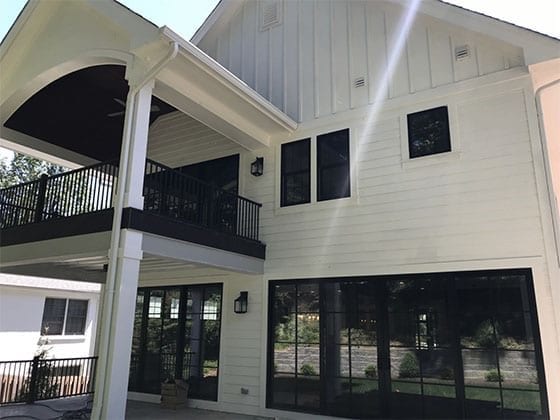
LEED Platinum is the highest level of LEED and it requires you to be at the top of your game for all the points. This home in the Hyde Park neighborhood of Cincinnati has two HVAC systems for super efficiency, a tankless water heater which lowers hot water footprint by 25%, an energy recovery unit for more fresh air without the cost to heat or cool it, and super air sealing for a low draft home environment.
Camden Homes has constructed 11 LEED homes, this is their third Platinum home with two more planned. They are also working on a 64-unit apartment complex to be LEED Certified.
Cincinnati history of tax abatements
Since 2002, the city of Cincinnati has granted 10-year tax abatement on structures. In 2007, the city added an additional five years to the tax abatement for those receiving LEED Certification. The current incentives are that owners must achieve LEED Certified to receive a tax break on the first $285,000 the structure’s value, LEED Silver $400,000, LEED Gold $562,000, and it’s unlimited if you achieve LEED Platinum. Because of the tax abatement, nearly every new home in Cincinnati is LEED Certified and builders have become quite familiar with how to do it cost effectively.
Certification level decision story
LEED for Homes
The LEED for Homes Rating System provides a basis for quantifying the benefits of green homes, thereby facilitating the widespread construction of more sustainable homes. One of the first steps in planning a LEED home is to adjust the certification thresholds based on the material and energy impacts. All else being equal, a large home consumes more materials and energy than a small home over its lifecycle. LEED compensates for these impacts by adjusting the thresholds for each award level. Thresholds for smaller-than-average homes are lowered, and thresholds for larger-than-average homes are raised. A home’s threshold for LEED Gold may be 72 points. A 4,500-sq.-ft. home with five bedrooms would be about 85 points.
In the end, the homeowner will have a well built and third-party certified home. Passing the blower door test alone is significant. Blower door tests are used to prove the air sealing quality of the construction. During the test the home is depressurized to -50 Pascal and measurements are recorded throughout the home to verify that outside air isn’t leaking into the home at a rate higher than required. It proves the home won’t be drafty and uncomfortable. Contrary to those builders who tell home owners that homes need to breathe for fresh air, it is much better to control the ventilation rather than allowing shoddy construction and leaky vapor barriers to supply fresh air to the home. This home is expected to achieve a Home Energy Rating System score of 59, which means it performs 41% better than a baseline home. The home’s 2” x 6” wall system allows for added insulation.
The LEED Certification system is broadly categorized into five equally important parts that demonstrate measurable environmental benefits: Site, Water, Energy, Materials, and Indoor Environment Quality. The following is a review of the features of this home according to the LEED for Homes system.
Prerequisites include building above the 100-year floodplain, not habitat for endangered species, built no closer than 100 feet to water or wetlands, land that wasn’t a public park and land that doesn’t have prime farmland, unique or soils of state significance. Excavated topsoil was reused; runoff was controlled, so it didn’t contaminate storm water sewers or erode hillsides.
Innovation and Design Process
The Innovation and Design Process section of LEED includes Integrated Project Planning, which maximizes opportunities for integrated, cost-effective adoption of green design and construction strategies.
A Preliminary Rating is arrived at as early a practical, they conducted a preliminary LEED for Homes meeting, with the participation of the key members of the project team and Green Building Consultants (the LEED for Homes Certification Provider) to target the level of LEED, select credits and assign the parties accountable.
The Integrated Project Team typically includes holding monthly meetings to review project status, introduce new team members to the project goals, discuss problems encountered, formulate solutions, review responsibilities and identify next steps. The Integrated Project Team is formed to maximize the opportunities for integrated, cost-effective adoption of green design and construction practices.
A big help with this is that at least one principal member is a Professional Credentialed with respect to LEED for Homes.
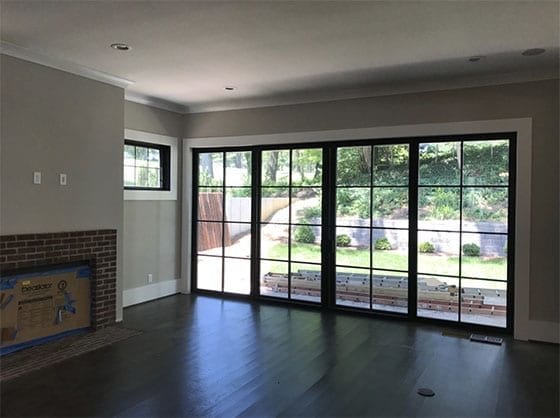
Durability management process
The Innovation and Design Process section also includes the Durability Management Process, which promotes durability of the high-performance building enclosure, its components and systems through appropriate design, materials selection, and construction practices. Prior to construction, the project team will identify risks, responses regarding pests, storm damage and moisture control measures.
The home’s plans include the following features: No paper-backed backer board or carpet in tub, shower and spa areas, no carpet within three feet of the entryway, drain and drain pans for tank water heaters and clothes washers in or over living areas, and exhausting conventional clothes dryers directly to outdoors.
Durability Management requires that the builder have a quality management process in place to ensure installation. A third-party verified these durability conditions.
Innovation or regional design
The home incorporates additional green design and construction features with measurable environmental benefits.
Location and Linkages
Location and Linkages include site selection, which is a very important aspect of sustainable homes. This home isn’t in a floodplain or built within 100 feet of water or wetlands. The infill site with existing infrastructure didn’t replace prime farmland or parkland and build on habitat or threatened or endangered species. Excavated topsoil was reused; runoff was controlled, so it didn’t contaminate storm water sewers or erode hillsides.
Preferred location guidelines encourage the building of LEED homes near or within existing communities. This project was an infill site, which means at least 75 percent of the perimeter immediately borders previously developed land. It was built on a previously developed lot and uses Existing Infrastructure because it is within a half mile of existing water and sewer lines.
Community Resources / Transit
Community Resources / Transit require it to locate close to basic resources such as arts and entertainment center, bank, convenient store, daycare, fire station, cleaner, library, pharmacy, places of worship and schools. This home achieved Outstanding community resources / transit because it is within one-quarter mile of 11, one-half mile of 14 basic resources such as arts and entertainment center, bank, convenient store, daycare, fire station, cleaner, library, pharmacy, places of worship and schools. And it has at least 60 transit rides available nearby per weekday.
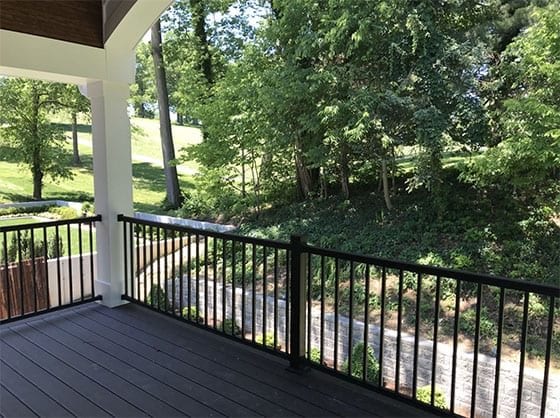
Access to open space
The highly desired urban location encourages walking, physical activity, and time spent outdoors. Locate within ½ mile of a ¾ acre of a public open space.
Sustainable Sites
Although the focus of green building is typically on the built structures located on a site, the design of the site and its natural elements can have a significant environmental impact.
Site Stewardship
Although the focus of green building is typically on the built structures located on a site, the design of the site and its natural elements can have a significant environmental impact. Site clearing and earth moving can contribute to considerable runoff, leading to soil erosion and alteration of natural drainage patterns both on and off-site. The home utilized Erosion Controls During Construction.
The Minimizing Disturbed Area of Site credit is automatically granted to high-density construction, in recognition of the fact that compact development enables communities to set aside land for conservation. They placed the home to minimize drainable pattern changes, scheduled construction in phases to minimize disturbance and clearly marked areas that are not to be disturbed. Maintaining vegetation in those areas.
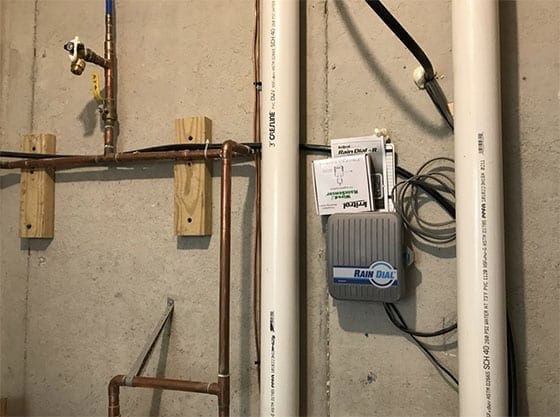
Landscaping
The Sustainable Sites category of credits includes landscaping, non-conventional turf, and drought tolerant plants such as Russian sage, lavender, black-eyed susan, hellebore, hosta and arborvitae. Since the provision and distribution of potable water is costly and energy intensive, particularly during dry periods, a more sensible strategy is to design landscaping that requires less potable water. This is accomplished by managing some of the runoff from the roof with a cistern and including a permeable garden on site. The home also has a smart irrigation system that doesn’t water the yard when it’s raining.
Local Heat Island Effects
The home has a light-colored concrete driveway with a solar reflectance index (SRI) of at least 29.
Surface Water Management
The permeable lot has permanent erosion controls on site and manages run-off from the roof by capturing it in a cistern. The water is used for landscape irrigation.
The Sustainable Sites category of credits includes prerequisites to prevent construction runoff from damaging sewers and preserve topsoil. An infill site minimized disturbed area of the site.
Nontoxic Pest Control
The home integrated nontoxic pest control methods by sealing external cracks, joints, etc. with caulking and installed pest –proof screens. There are no wood-to-concrete connections. Typically, all cellulosic (wood type) material is treated with borate product to 3′ above foundation as an additional pest control measure.

Compact Development
LEED encourages use of compact development patterns on buildable land to conserve land and promote community livability, transportation efficiency and walkability. This residence is located in a High Density area with an average housing density of 10 or more dwellings per acre of buildable land.
Water Efficiency
Water Efficiency is a very important category of LEED. It includes water reuse, which is demonstrated by a rainwater harvesting system, (including surface runoff and/or roof runoff) for landscape irrigation use. The 2500-gallon storage tank is sized to hold all the water from a 1-inch rainfall event (equivalent to .62 gallons per square foot of roof area used for capture) or about 80 percent of roof rainwater.
Water efficiency measures included a high-efficiency irrigation system including drip irrigation for 50% of planting beds, separate zone for each type of planting, timers for each zone, and sensors that recognize it has rained and no irrigation is needed. Third party inspection verified this.
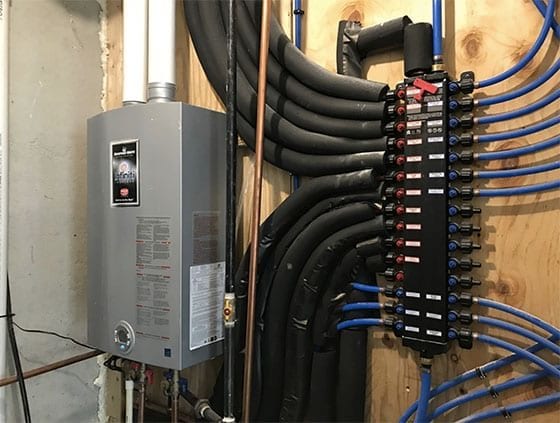
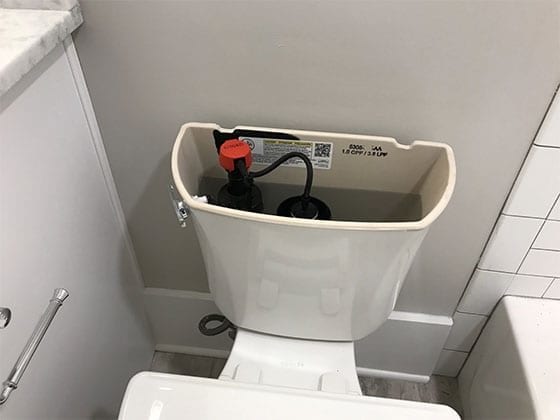
Indoor water use
Very High-efficiency fixtures and fittings were specified for this home with an average flow rate is 1.7 gallons per minute, and 1 gallons per flush. Two tankless water heaters lowers hot water energy consumption.
Energy & Atmosphere
Regarding Energy & Atmosphere, data from the homebuilding industry indicate that roughly 1.5 million new homes are built each year and that the average size of new homes has doubled in the past 50 years. As a result, total U.S. fossil fuel use in homes has been steadily increasing. The average American consumes five times more energy than the average global citizen, ten times more than the average Chinese person, and nearly 20 times more than the average Indian.
Exceptional energy performance measures improved the overall energy performance of the home by meeting or exceeding the performance of an Energy Star labeled home. A Home Energy Rating System (HERS) analysis verification of the energy efficiency of the home will be performed. They are required to exceed the Energy Star standard by reference to the Home Energy Rating System (HERS) analysis verification of the energy efficiency of the home. A rating of 35 will mean that a home is 65% more efficient than a typical home in Cincinnati.
Residential refrigerant management
No ozone damaging HCFC refrigerants are used in the air conditioning system.
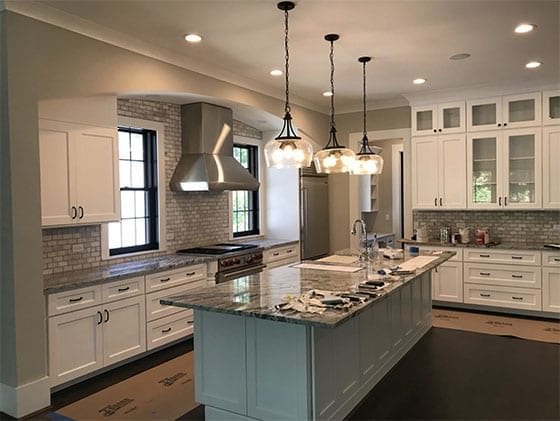
Materials and Resources
The choice of building materials in important for sustainable homebuilding because of the extraction, processing, and transportation they require. Activities to produce building materials may pollute the air and water, destroy natural habitats and deplete natural resources. Construction and demolition wastes constitute about 40% of the total solid waste stream in the United States.

Material-efficient framing
The choice of building Materials and Resources is important for sustainable homebuilding because of the extraction, processing, and transportation they require. Activities to produce building materials may pollute the air and water, destroy natural habitats and deplete natural resources. Construction and demolition wastes constitute about 40 percent of the total solid waste stream in the United States.
Materials and resources included framing efficiencies and off-site panelized construction leading to 88% of on-site waste diverted from landfills. Off-site panelized construction is similar to a factory-built home in that the quality of construction may be higher because the construction isn’t subject to the weather and the possibility of less highly trained carpenters.
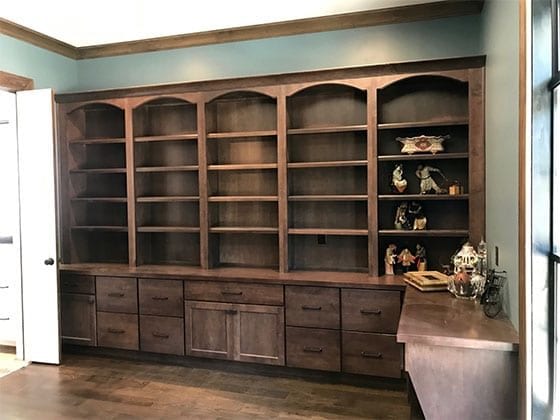
Environmentally preferable products
Environmentally preferable products increase demand for environmentally preferable products and products or building components that are extracted, processed, and manufactured within the region. Local pine was used throughout the house for molding and trim. The front door is regional cherry wood. Service doors contain recycled content.
If Forest Stewardship Certified tropical wood was used, the country of origin was requested for each wood product. A species is considered tropical if it is grown between the Tropics of Cancer and Capricorn.

Waste management
Waste management practices require projects to reduce waste generation to a level below the industry norm. Construction waste management planning investigated and documented local options for diversion and measured it, which resulted in diverting at least 25 percent or more from landfills.
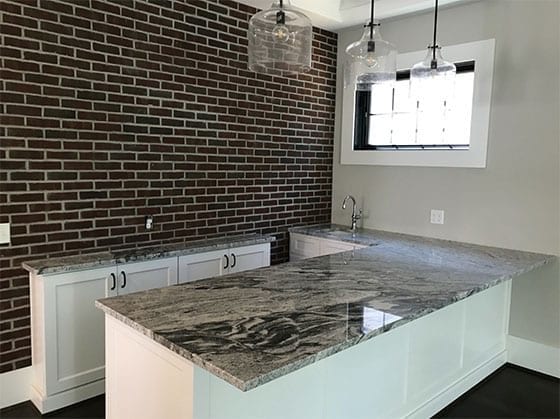
Indoor Environmental Quality
Americans spend an average 90% of their time indoors, where levels of pollutants may run two to five times – and occasionally more than 100 times – higher than outdoors, according to the U.S. Environmental Protection Agency. Many of the pollutants found indoors can cause health reactions in the estimated 17 million Americans who suffer from asthma and 40 million who have allergies, contributing to millions of days absent from school and work.
Combustion venting
Indoor Environmental Quality requires combustion venting which limits the leakage of combustion gases into the occupied space of the home. Indoor environmental quality included no unvented combustion appliances, carbon monoxide detectors in rooms that share a door with the garage; all fireplaces have doors, and space/water-heating equipment is designed with closed combustion or catalytic converters are specified.
Moisture control
Controlling indoor moisture levels to provide comfort, reduce risk of mold and increase the durability of the home is part of the moisture load control. They installed dehumidification equipment capable of maintaining humidity at or below 60 percent. They meet ASHRAE Standards and only exhaust air to the outdoors, not the attic or interstitial spaces.
Outdoor Air Ventilation
Outdoor Air Ventilation measures reduce occupant exposure to indoor pollutants by ventilating with outdoor air. Prerequisites included bathroom and kitchen exhausts meeting ASHRAE Standard 62.2 airflow requirements, air is exhausted to outdoors by an Energy Star labeled bathroom exhaust. The home also included enhanced combustion venting measures Third-party performance testing was performed to verify proper installation.
Local exhaust
LEED Homes reduce moisture and exposure to indoor pollutants in kitchens and bathrooms by meeting ASHRAE Standards and only exhaust air to the outdoors, not the attic or interstitial spaces. Enhanced local exhaust uses occupancy sensors, automatic humidistat controller, and automatic timer or continuous fan. It included third-party performance testing.
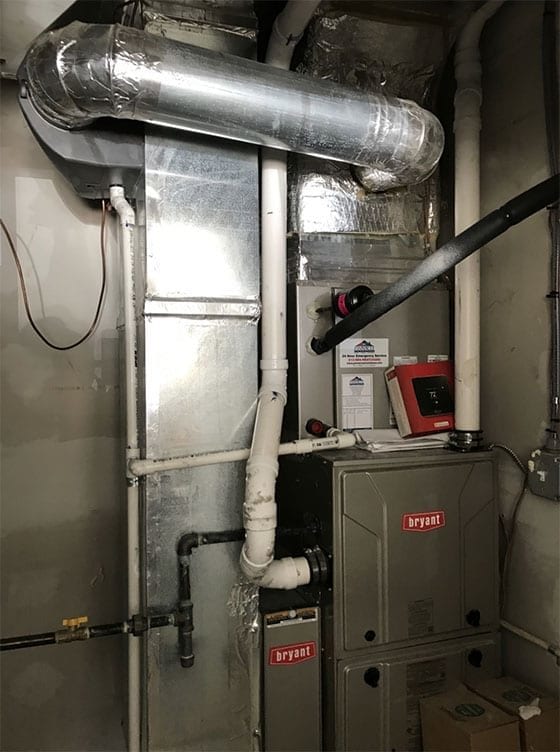
Distribution of space heating and cooling
Distribution of space heating and cooling provided appropriate distribution of HVAC in the home to improve thermal comfort and energy performance. Room-by-room load calculations ensured ducts are designed accordingly. A typical home which has improved the distribution of space heating and cooling includes a return air opening of 1 square inch per cfm of supply and continuous supply airflow rates in each room tested and confirmed. This home has two HVAC systems that allows the systems to perform at their highest efficiency versus two systems being used at a lower efficiency.
Air filtering
Very high performance, MERV 13, filters were installed.
Contaminant control
Indoor contaminants were controlled during construction, and the design allows for contaminant control, which includes space for shoe removal and storage near the primary garage entryway. A preoccupancy flush was performed to rid the home of contaminants that built up during the construction process.
Radon protection
Radon testing was done, and controls put into place if needed.
Garage pollutant protection
The home has no HVAC in the garage to minimize pollutants from the garage. The attached garage penetrations and floor and ceiling joists connections are sealed to prevent pollutants from getting into the home and includes an exhaust fan.
Awareness and Education
Some homebuyers may know very little about green home construction. They may be unaware of the green features in the home, or they may be unfamiliar with how to use and maintain them. Without adequate training, the full benefits of the LEED measures likely will not be achieved.
Education of the homeowner or tenant
These homeowners will receive an operator and training manual as well as a one-hour walkthrough. They’ll also receive the LEED checklists and forms, manufacturer’s manuals and cleaning and maintenance guidance. Finally, they will receive two hours of enhanced training.
Awareness and education requirements include this article as part of the LEED Certification. It will be published online at Green Cincinnati Education Advocacy and the local USGBC’s Chapter site once certified. LEED signage was posted on the site.
If you are interested in more information about the builder of this LEED home, contact:
Camden Homes
4565 E. Galbraith Road
Cincinnati, OH 45236
513.300.3300
About the builder from their website
Camden Homes is well recognized for expertly designing and crafting truly custom residences in premier locations since 1978. Camden’s founder, Dutch Cambruzzi, and his highly qualified team specialize in helping each client determine their exact housing needs by evaluating which location, home design, and price range will work best for them.
Camden has built a reputation for being very customer-oriented and that mission continues to this day. Our clients soon discover that the Camden Team demonstrates an energetic passion for and solid commitment to the entire building process, from the initial concept design and appropriate lot selection for their envisioned future property on through to the magnificent architecture and quality finishes of their custom luxury home.
Camden takes pride in personalizing each residence, always making the personal taste and requirements of the buyer the top priority while providing the best value for the home owner’s dollar. Camden’s in-house design studios showcase the various products available and their expert, professional designers help to create the vision that affords a smooth and positive building experience.
If you would like to tour LEED homes in Cincinnati
We suggest you join the local USGBC Chapter and attend their home tours, learn more about What a LEED Home looks like?


